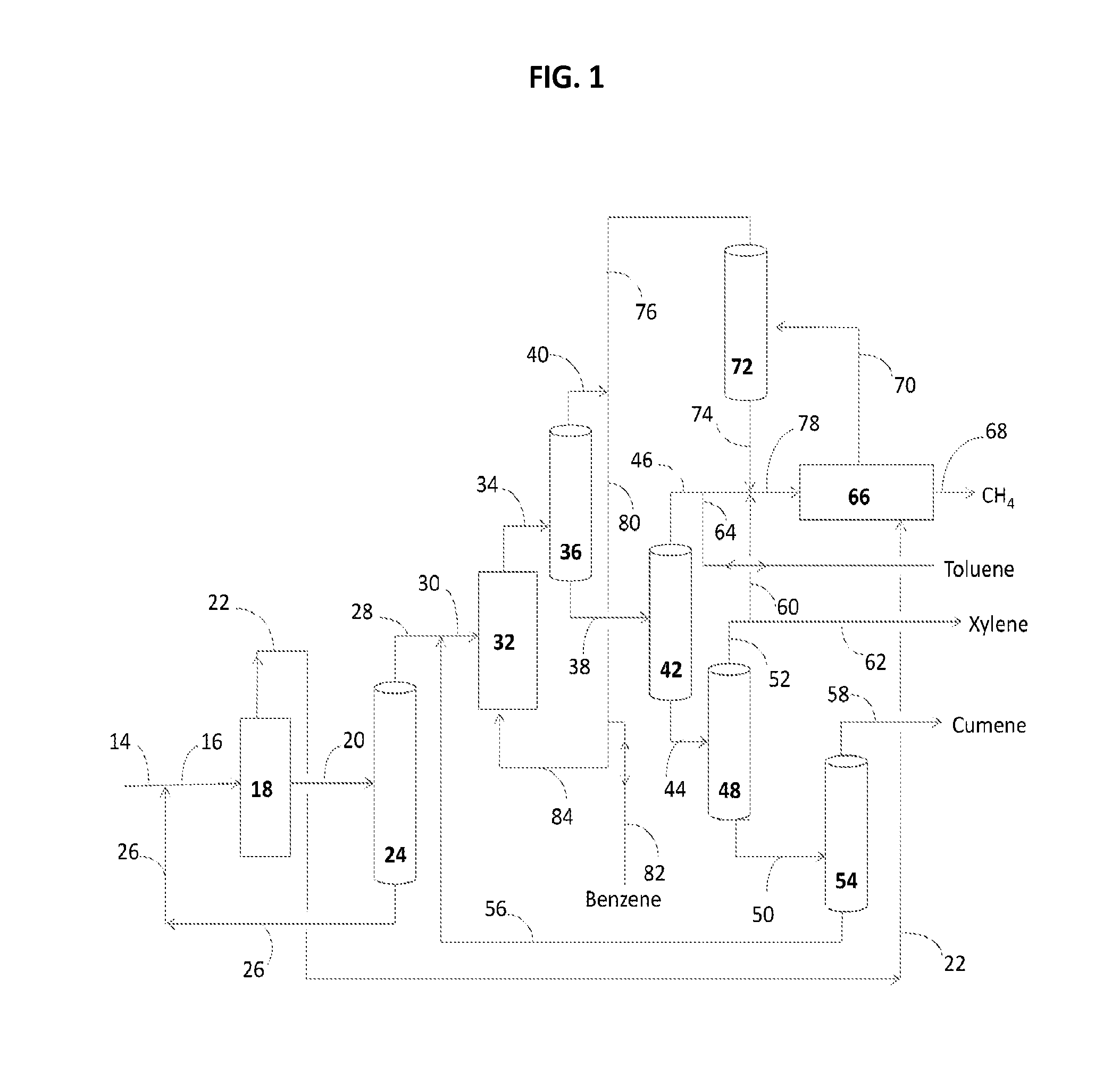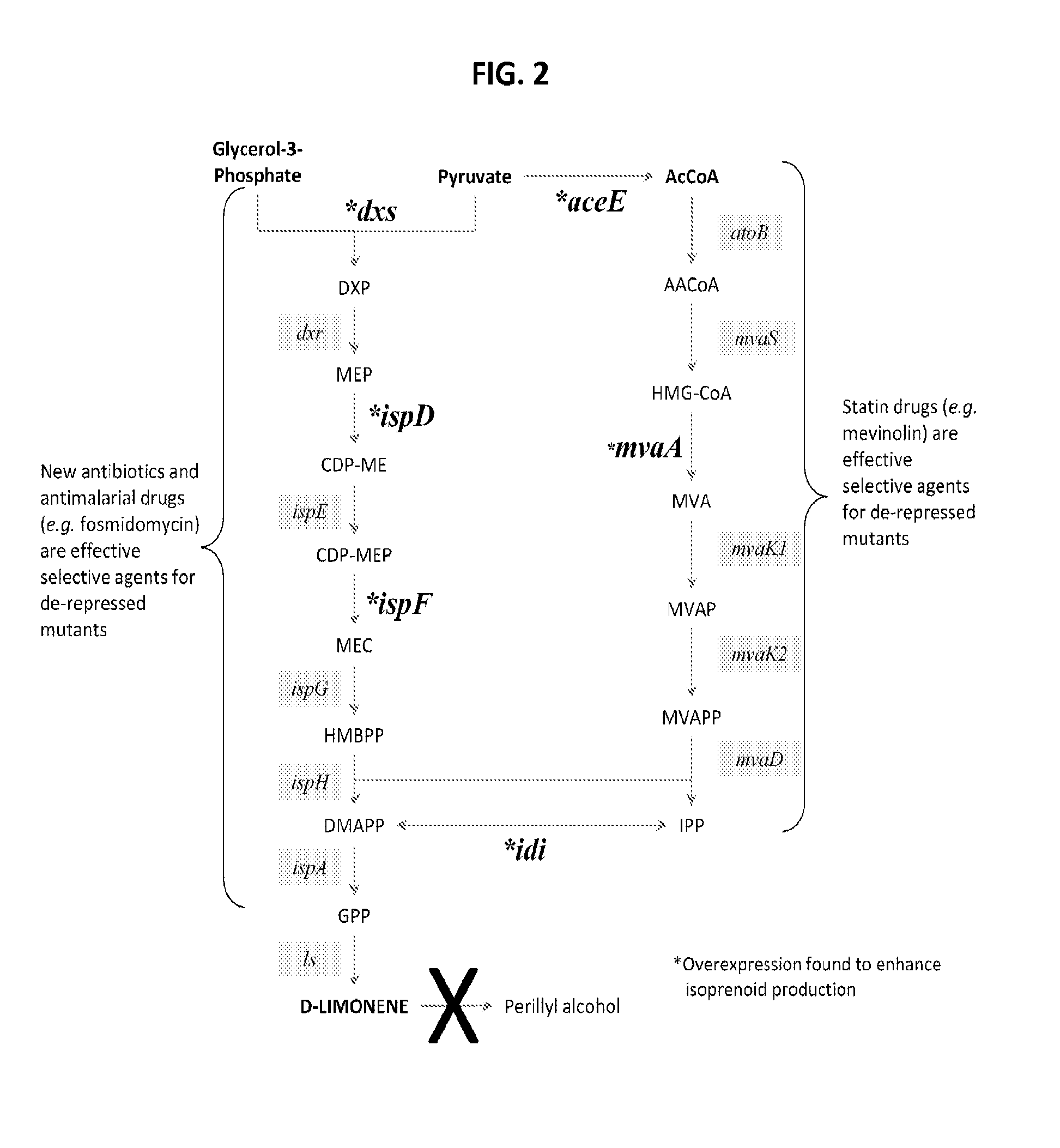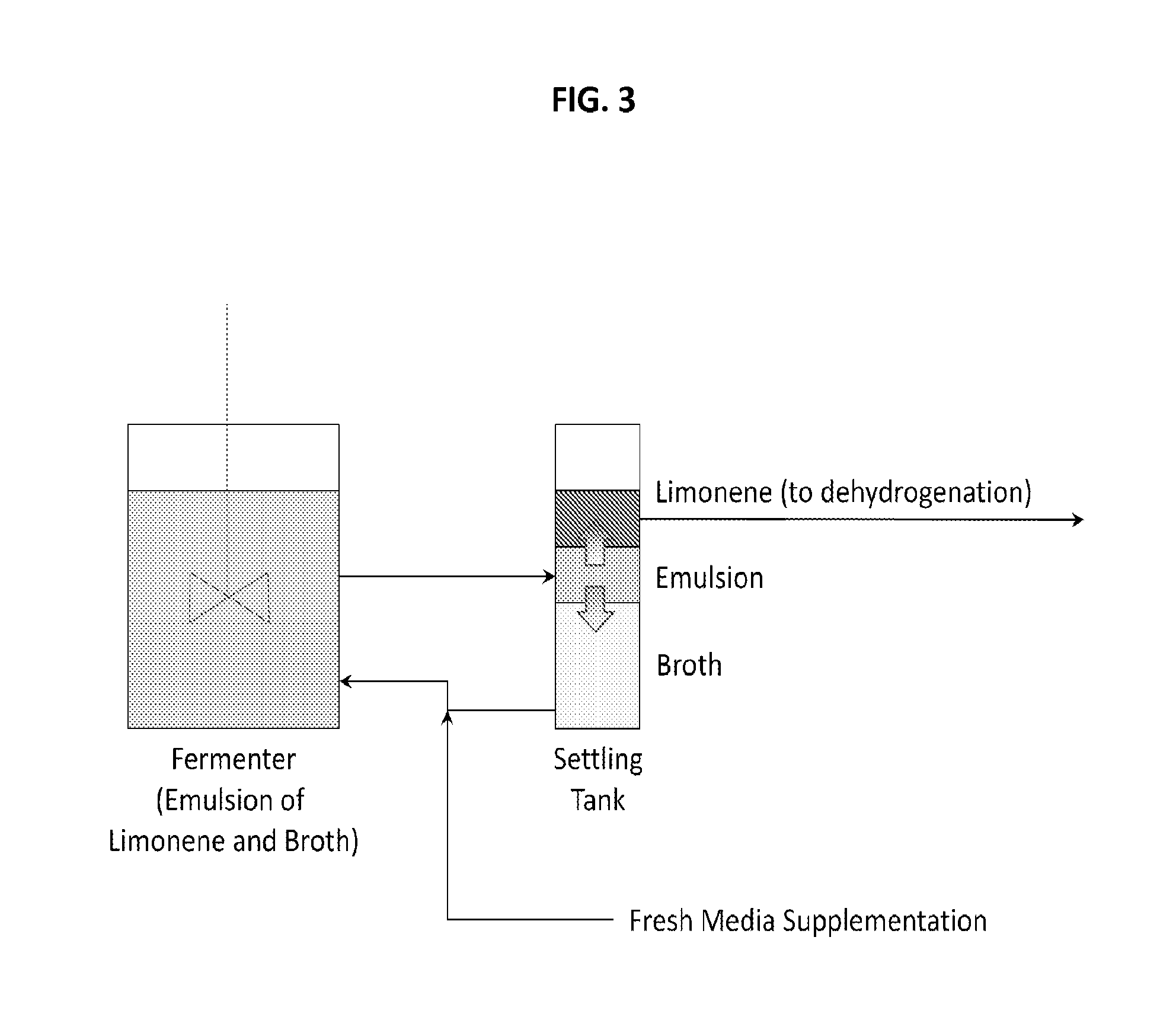Production of renewable aromatic compounds
a technology of aromatic compounds and aromatic compounds, applied in the direction of hydrocarbon preparation catalysts, hydrocarbon by hydrocarbon cracking, etc., can solve the problems of large amounts of carbon dioxide released, non-renewable resources that are being depleted, and the use of fossil fuels raising environmental issues
- Summary
- Abstract
- Description
- Claims
- Application Information
AI Technical Summary
Benefits of technology
Problems solved by technology
Method used
Image
Examples
example 1
Materials and Methods
[0173]Bacterial and Yeast Strains:
[0174]E. coli DH10B ElectroMAX cells are purchased from Invitrogen Life Technologies, Inc (Carlsbad, Calif.). E. coli BL21(DE3) cells are from Novagen (Madison, Wis.). S. cerevisiae strains are from Invitrogen (Brachmann C B, Davies A, Cost G J, Caputo E, Li J, Hieter P, Boeke J D (1988) Designer deletion strains derived from Saccharomyces cerevisiae S288C: a useful set of strains and plasmids for PCR-mediated gene disruption and other applications. Yeast 14(2):115-32).
[0175]Vector System:
[0176]The pESC Yeast Epitope Tagging Vector System (Stratagene, La Jolla, Calif.) is used to clone and express the Geranyl Pyrophosphate Synthase (gps) gene from tomato (Solanum lycopersicum) and the monoterpene synthase genes (α-pinene synthase from Pinus taeda (loblolly pine), γ-terpinene synthase from Citrus unshiu (satsuma) terpinolene synthase from Abies grandis (grand fir) d-limonene synthase from Citrus unshiu (satsuma) β-pinene synthase...
example 2
Cloning of Monoterpene Synthase and Geranylpyrophosphate Synthase Genes into Saccharomyces cerevisiae Strains
[0193]Construction of GPSpESCUra, and GPSpESCLeu:
[0194]The nucleic acid sequence of a geranyl pyrophosphate synthase (GP synthase or GPS) from Solanum lycopersicum is obtained from the National Center for Biotechnology Information (NCBI) Genbank (Accession number DQ286930). The GPS gene is cloned into the pESCUra and pESCLeu vectors singly behind the Gall promoter using the Bam HI and Xho I sites of Multiple Cloning Site 2. Primers for the synthesis of the gene with appropriate restriction sequences for the pESC vectors 5′ of the gene's ATG start codon and 3′ of each gene's stop codon are designed for PCR amplification using the Solanum lycopersicum (Tomato) cDNA library UC82-B (Vector: Lambda ZAP II vector, Average Insert Size: 1.0 kb, available from Agilent Technologies (Catalog #: 936004)) as template. The NH3 terminus primer has a Bam HI restriction site (underlined) and ...
example 3
Overexpression of GPS and MS Genes in S. cerevisiae Strains and Accumulation of Monoterpenes in the Fermentation Broth
[0200]Induction of the GPS and MS Genes:
[0201]S. cerevisiae strains carrying the pESCLeu plasmid with or without the GPS / MS inserts are grown in 5 mL SC-Leu containing 2% glucose overnight at 30° C. with shaking. One mL from each culture is transferred to 5 mL of SC-Leu medium containing 1% raffinose and 1% glucose and the incubation is continued for 10 hours. The medium of the Y22884 strains also contains 0.2 mg / mL geneticin. The OD600 of each culture is determined and the amount of culture necessary to obtain an OD600 of 0.16 to 0.4 in 100 mL of SC-Leu containing 1% galactose and 1% raffinose (induction medium) is calculated. The calculated volume of cells is centrifuged at 1500×g for 10 min at 4° C., and the pellet is resuspended in 100 mL induction medium. Each construct is grown at 30° C. with shaking at 250 rpm from 0 to 90 hours.
[0202]Determination of Monoterp...
PUM
| Property | Measurement | Unit |
|---|---|---|
| pore diameter | aaaaa | aaaaa |
| temperature | aaaaa | aaaaa |
| temperature | aaaaa | aaaaa |
Abstract
Description
Claims
Application Information
 Login to View More
Login to View More - R&D
- Intellectual Property
- Life Sciences
- Materials
- Tech Scout
- Unparalleled Data Quality
- Higher Quality Content
- 60% Fewer Hallucinations
Browse by: Latest US Patents, China's latest patents, Technical Efficacy Thesaurus, Application Domain, Technology Topic, Popular Technical Reports.
© 2025 PatSnap. All rights reserved.Legal|Privacy policy|Modern Slavery Act Transparency Statement|Sitemap|About US| Contact US: help@patsnap.com



